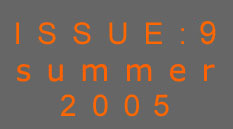In this issue
By the time this edition of ENS News reaches
you across the ether you may already be warming yourself on a
sandy beach or chilling out by a pool in some exotic location.
Yes, it’s that time of year again, when thoughts switch
from all things nuclear to other, more relaxed ways of creating
and consuming energy – or saving it as the case may be.
Well, before the ENS News team reaches for the sun tan lotion
and the Immodium (where’s that on Mendeleyev’s table?),
here is the last news offering before the summer break.
Issue N° 9 reaches far across
time and space, from World War II Chicago, via Gabon, to when
our planet was created around 2 million years ago. ENS President,
Bertrand Barré, travels back in time and across continents
to trace the history of fission and provides some 21st
Century answers to questions that are rooted in the mists of time.
Bertrand’s journey starts in 1942 Chicago,
when Enrico Fermi succeeded in sustaining the first ever fission
chain reaction in the first ever man-made nuclear reactor, the
CPI. For decades after Fermi’s ground-breaking achievement,
it was believed that the CPI was not just the first ever man-made
reactor, but the first ever nuclear reactor – full stop.
Bertrand turns the clock back over 2 million years to the time
when algae first released enough oxygen into the atmosphere for
surface waters to become oxidizing. Once this happened the uranium
diluted in granite was leached out and concentrated to form rich
uranium oxide deposits. And the rest, as the saying goes, is history.
Geological and chemical research has revealed that the first nuclear
reaction took place when our planet first saw the light of day.
So, the CPI was not the first nuclear reactor, Mother Nature was.
We then move forward, at the speed of light,
to the 1970s, when large uranium deposits were first mined at
Oklo, in Gabon, West Africa? But this is when the detective story
begins. Bertrand’s editorial examines why the uranium found
in Oklo was different from natural uranium everywhere else. Was
the Oklo mine a “natural” nuclear reactor that enriched
uranium spontaneously? He provides his answers to the mystery
and sheds light on whether or not Oklo was a natural phenomenon
that Fermi could never have dreamt of.
Our “Tapping Unusual Quarters” article
this time focuses on the issue of sustainability and whether this
modern buzz-word that so preoccupies economists, politicians,
scientists and environmentalists alike stand sup to scrutiny.
Is it just a trendy cliché or is it a genuinely sustainable
concept?
The ENS News Events section provides updated
information on all the ENS-organized conferences that are looming
large in the rear-view mirror.
First up is more news about ETRAP, which takes
place in Brussels from 23-25 November 2005 and we end the year
with the ENC (Versailles, 11-14 December). The
2006 calendar features four main highlights, starting with PIME,
in Vienna, from 12-16 February. The RRFM 2006
conference will take place from 30 April-3 May, in Sofia, Bulgaria.
Full details are available on the dedicated web pages.
The Member Societies and Corporate Members section
features reports from our friends at the German and Romanian Nuclear
Societies. CEZ, the Czech Republic’s primary nuclear operator
then takes the spotlight with the 20th anniversary of the operation
of the Dukovany NPP.
The European Institutions section features reports
on COWAM 2 (the European Commission-funded “Community Waste
Management” programme) and on the work of a special FORATOM
Task Force on the Baltic Sea Region, which involved the participation
of a number of European Members of Parliament, European Commission
officials and national politicians and experts from the Baltic
countries, Sweden and Finland.
How often does a co-founder of Greenpeace publicly
nail his newly-found pro-nuclear colours to the mast? About as
often as a total eclipse of the sun occurs? Well, you’d
be surprised; the World News section of ENS News reveals all.
“Green light for Monju” puts the spotlight
on the latest developments in Japan and the section ends with
the traditional NucNet news round-up.
Enjoy this, latest edition of ENS News.
Happy Holidays from the ENS News team!
| 
Peter Haug
Secretary General
|

Andrew Teller
Editor-in-Chief
|
|





